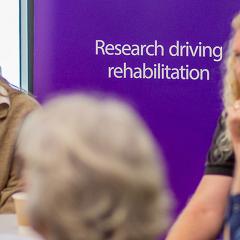What is the research about?
Our research focuses on the role of smartphone applications (apps) in helping individuals in Australia who experience ongoing pain in their muscles, bones, or nerves to track their symptoms. These apps have the potential to make it easier for patients to record their pain levels in their daily lives and for healthcare professionals to check on their patients' pain remotely. Our goal was to find out how many of these apps are available, what features they offer, and whether they could be useful in a healthcare setting.
What did the researchers do?
Our team searched Apple App Store and Google Play Store in Australia for apps that help people track pain related to muscles, bones, or nerves. Using specific search terms, we identified all the apps that were available on 2-Feb-2022 that had a focus on pain tracking, excluding any that were for tracking general health, other types of pain (e.g. cancer pain), and headaches. Selected apps were downloaded and thoroughly reviewed for features, and the quality of each app was assessed using the well-established Mobile App Rating Scale (MARS).
What did the researchers find?
The study shows that although many apps are available, the features differ substantially from one app to the next. The study also provides insights for selecting the right app for patients, considering features such as the method of pain recording, additional tracking capabilities, and the ability to share data with clinicians. The resarchers also concluded that it's essential for future apps to engage users more and provide data that clinicians can use easily.
What you need to know:
This research is important for healthcare professionals and policymakers to understand which pain monitoring apps may be most beneficial for people with muscle, joint or nerve pain. For developers and researchers, the findings highlight the importance of creating apps that not only engage patients but also provide clinicians with valuable, real-time data. Policymakers could use this information to advocate for the inclusion of app-based monitoring in healthcare protocols and funding for further development of high-quality pain tracking apps.
How can you use this research?
The findings may help health professionals and people with pain in choosing the right app. This choice could be based on the overall quality of the app or whether it has features that can address specific patient needs, such as providing reminders or allowing other aspects of pain to be recorded (such as whether the pain is sharp or dull, aching, burning, throbbing, tingling, and so on).
About the researchers
Dr Joshua Simmich is a physiotherapist who joined the RECOVER Injury Research Centre in the role of Research Officer in September 2020.
Dr Megan Ross is a postdoctoral fellow at RECOVER Injury Research Centre.
Dr Nicole Andrews is an internationally recognised scholar in the field of pain management and an experienced clinician.
Dr Atiyeh Vaezipour is a human factor researcher at Google Maps for Automotive and an honorary research fellow at RECOVER Injury Research Centre.
Professor Trevor Russell is a professor in the Division of Physiotherapy within the School of Health and Rehabilitation Sciences at The University of Queensland.
Citation
Simmich, J., Ross, M. H., Andrews, N. E., Vaezipour, A., & Russell, T. G. (2023). Content and Quality of Mobile Apps for the Monitoring of Musculoskeletal or Neuropathic Pain in Australia: Systematic Evaluation. JMIR Mhealth Uhealth https://doi.org/10.2196/46881
Keywords
Pain; Monitoring; Digital Health; Mobile Application; Pain Management; Pain Level; Chronic Pain; Smartphone; Musculoskeletal Pain; Neuropathic Pain; Remote Monitoring
Contact information, acknowledgements
Joshua Simmich
RECOVER Injury Research Centre, The University of Queensland
Email: j.simmich@uq.edu.au
X: @JSimmich



